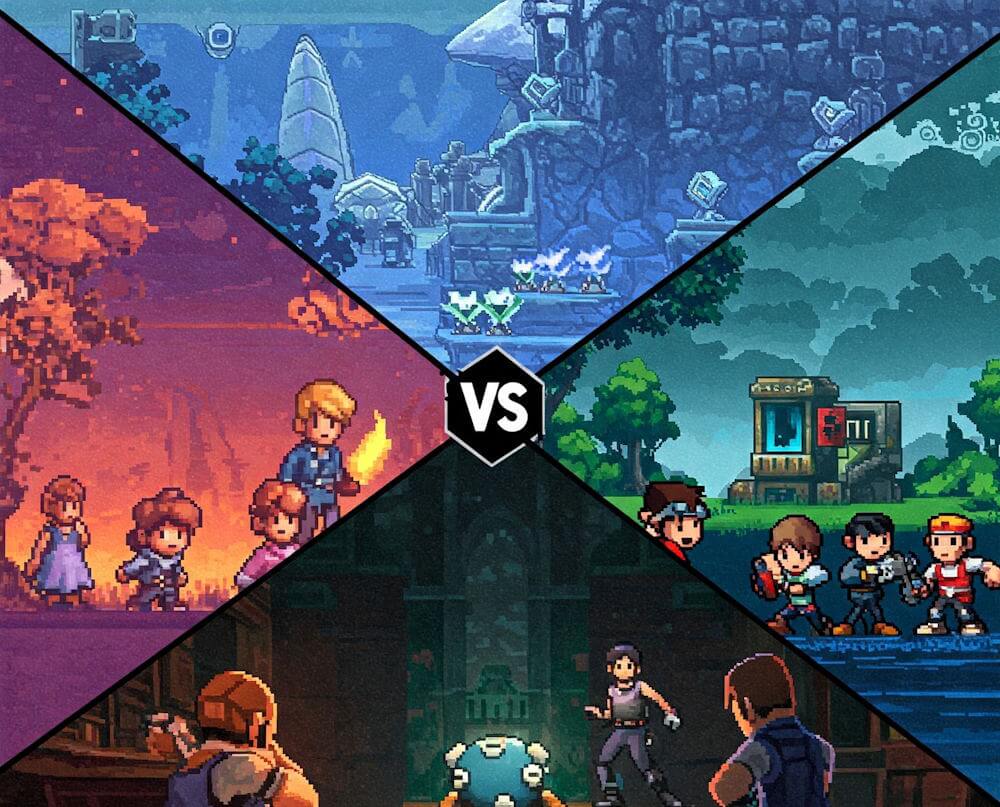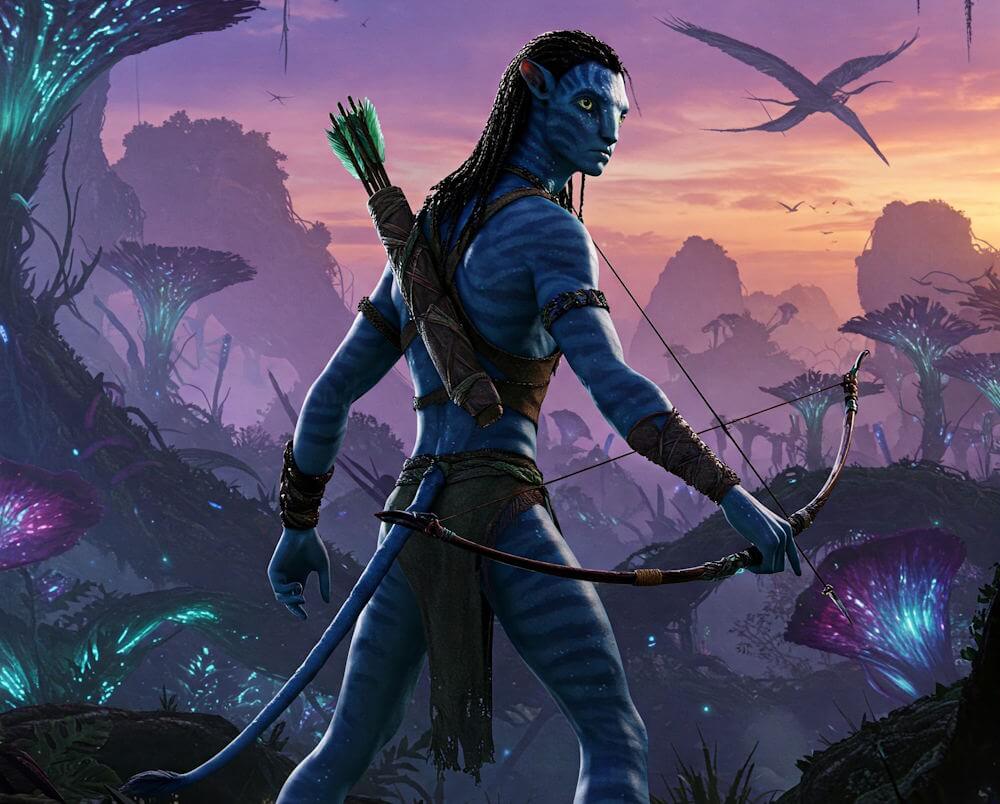Introduction to Remakes and Remasters
As the gaming industry evolves, two terms have gained prominence in discussions about game development and player experiences: remakes and remasters. While these terms are often used interchangeably, they signify distinct approaches to re-releasing video games that cater to both nostalgia and modern gaming demands.
A video game remake is a comprehensive reimagining of an existing title. This involves reconstructing the game from the ground up, usually with enhanced graphics, updated mechanics, and a reworked narrative. The goal of a remake is to provide players with a fresh yet familiar experience, often incorporating technological advancements that were unavailable during the original release. Remakes allow developers to engage with new audiences while honoring the legacy of the original game. Examples include the recent remake of “Final Fantasy VII,” which not only revisits the original’s story but also modernizes gameplay mechanics to align with contemporary standards.
In contrast, a remaster refers to the process of enhancing an existing game without fundamentally altering its original structure. This typically involves improving graphics, sound quality, and frame rates, aiming to offer a smoother experience on current hardware. Enhanced textures and high-definition resolutions can breathe new life into the game, making it accessible to a newer generation of gamers. For instance, the “Shadow of the Colossus” remaster provided players with hyper-realistic visuals while retaining the core gameplay that made the original a classic. It’s worth noting that while remasters can improve the overall presentation, they often do not include significant changes to gameplay or story.
By understanding these distinctions, gamers can make informed decisions regarding which titles are worth their time and investment. The conversation around remakes and remasters not only highlights advancements in technology but also illustrates the ongoing importance of legacy in video gaming culture.
The Evolution of Video Game Technology
The landscape of video games has undergone a transformative journey since their inception, greatly influenced by advancements in technology. Early video games were often constrained by limited hardware capabilities, resulting in simplistic graphics and basic gameplay mechanics. The characters, environments, and sound effects were rudimentary, appealing mainly to a niche audience. However, as computing power has increased, so too has the complexity and richness of video game experiences. This evolution is particularly relevant when discussing remakes and remasters, which leverage modern technology to redefine classic titles.
With each new generation of consoles, developers have been able to push the boundaries of what is possible within video games. The transition from 8-bit graphics to 16-bit and eventually to high-definition visuals exemplifies this progress. Players now enjoy photorealistic graphics, meticulously crafted environments, and lifelike character animations, providing deeper engagement than ever. Sound quality has similarly improved, with surround sound options and dynamic audio bringing a new level of immersion into the gaming experience.
Remakes and remasters of classic games serve as prime examples of how current technology can revitalize beloved titles. A remake typically involves rebuilding a game from the ground up, often improving its graphics and gameplay mechanics dramatically. In contrast, a remaster enhances the existing game, upgrading its visuals and sound without altering the core gameplay significantly. Both strategies attract new audiences while offering nostalgic experiences to long-time fans, bridging the gap between eras of gaming. The synergy between timeless gameplay and technological advancements ensures that old favorites remain relevant in the fast-evolving world of video games, enhancing appreciation for both the original and contemporary iterations.
Understanding Player Expectations
When it comes to video games, players often hold distinct expectations for remakes and remasters. A remake typically involves a complete overhaul of the original game, incorporating modern technology and design philosophies. This may lead players to anticipate substantial improvements in gameplay mechanics, graphics, and narrative depth. In contrast, remasters are generally understood to enhance the existing game without altering its core essence, focusing predominantly on upgrading visuals and performance while maintaining the original experience.
Nostalgia plays a vital role in shaping player expectations for both remakes and remasters. Fans of older titles often possess fond memories linked to these games, creating a longing for the experiences they once provided. When a classic game is remade, players expect developers to honor the original source material while innovating sufficiently to create an engaging experience for new audiences. This introduces a challenge for developers, as they need to strike a balance between retaining the beloved elements of the original and integrating modern sensibilities to attract a younger generation. Failure to achieve this equilibrium can lead to disillusionment from long-time fans who may feel that their cherished memories have been compromised.
The community’s reception of remakes versus remasters can vary significantly based on how well these expectations are met. Successful developers often employ extensive market research and engage with player feedback to refine their vision, ensuring they cater to a broad audience while preserving the nostalgic elements that form the foundation of these beloved titles. Ultimately, understanding and managing player expectations is crucial in determining whether a remake or remaster will be embraced or met with disappointment. By navigating the fine line between preserving history and paving the way for the future, developers enhance the chances of delivering a rewarding experience for players across generations.
Case Studies: Notable Remakes
In the world of video games, remakes often serve as a bridge between nostalgia and innovative gameplay. Two significant examples of successful video game remakes are ‘Resident Evil 2’ and ‘The Legend of Zelda: Link’s Awakening.’ Both titles exemplify how remakes can enhance the original experience through improved graphics, refined gameplay mechanics, and a reimagined storytelling approach.
‘Resident Evil 2,’ originally released in 1998, was completely overhauled in its 2019 remake. The developers took advantage of advanced technology to enhance the game’s visuals significantly; the iconic fixed camera angles were replaced with a dynamic over-the-shoulder viewpoint. This shift not only modernized the graphical fidelity but also allowed players to immerse themselves more deeply in the tense atmosphere of Raccoon City. Furthermore, modifications to gameplay mechanics, such as improved enemy AI and the addition of new puzzles, refined the challenge while remaining true to the source material. Emphasizing survival horror elements, the remake also introduced an updated sound design, creating a more chilling experience.
Similarly, ‘The Legend of Zelda: Link’s Awakening,’ originally released for the Game Boy in 1993, was remade for the Nintendo Switch in 2019. This remake adopted a distinctive art style, featuring a whimsical, toy-like aesthetic that breathes new life into the beloved classic. Alongside visual enhancements, the gameplay saw notable improvements, including a more user-friendly interface and reworked dungeon designs that encouraged exploration and puzzle-solving. The addition of new content, like the Chamber Dungeon, allowed players to engage with the game in novel ways while honoring the original’s spirit.
These case studies exemplify the potential of video game remakes to not only enhance graphics but also elevate gameplay and player experience. Such remakes can set benchmarks for future projects, showcasing the delicate balance between tradition and innovation that defines remarkable adaptations in the gaming industry.
Case Studies: Memorable Remasters
In the realm of video games, the distinction between remakes and remasters is often blurred. However, some remasters stand out as exemplary representations of how to enhance an original title while preserving its core essence. Two noteworthy examples in this category are ‘The Last of Us Remastered’ and ‘Bioshock: The Collection.’
‘The Last of Us Remastered’ successfully revitalized the originally released game by enhancing the graphics to leverage the capabilities of the PlayStation 4. The visual improvements include a higher resolution, improved textures, and more detailed character models, which contribute to a more immersive gaming experience. Furthermore, enhancements in the frame rate ensure smoother gameplay, especially during high-intensity sequences. However, it’s important to note that despite these graphical upgrades, the remaster retains the original game’s narrative integrity and gameplay mechanics, providing both new players and returning fans with a familiar yet visually enriched experience.
Similarly, ‘Bioshock: The Collection’ serves as an exemplary case of a well-executed remaster. This collection encompasses the original ‘Bioshock’, ‘Bioshock 2’, and ‘Bioshock Infinite’, all enhanced for current-generation consoles. The remastered versions feature upgraded graphics and improved performance, with resolution enhancements and refined environmental details that elevate the atmospheric quality of Rapture and Columbia. The remaster also incorporates all previously released downloadable content, greatly expanding the replay value for fans of the franchise. By maintaining the original gameplay dynamics while amplifying the visual components, ‘Bioshock: The Collection’ caters to both nostalgic players and newcomers alike.
These case studies illustrate that successful remasters strike a balance between enhancing gameplay performance and preserving the foundational qualities that made the original games compelling. Such thoughtful improvements not only enrich the experience but also engage a broader audience of gamers.
Game Design Considerations: Pros and Cons
When discussing the evolution of video games, particularly in the context of remakes and remasters, it is imperative to acknowledge the myriad challenges and benefits associated with these design decisions. Developers often grapple with the delicate balance between preserving the nostalgia of classic titles while updating gameplay mechanics and visuals to meet modern standards. This blend of tradition and innovation raises several important considerations.
One significant advantage of remakes is the opportunity to completely overhaul outdated gameplay systems. Enhancing player experiences through refined controls and intuitive mechanics can rejuvenate a game’s appeal to a new generation while retaining the essence that long-time fans cherish. Furthermore, technological advancements allow for the incorporation of contemporary graphics, sound design, and gameplay features such as online multiplayer or enhanced narrative elements, which can significantly elevate the overall gaming experience.
However, this transformative process comes with its own set of risks. Engaging in a remake often entails a considerable investment of time and resources, not only to ensure the new product meets player expectations but also to navigate potential backlash from fans who have a strong attachment to the original. The design team must carefully evaluate which elements are non-negotiable in preserving authenticity and which can be modernized. Additionally, developers may face challenges in maintaining the original game’s difficulty balance and overall design philosophy, which can affect player reception.
On the other hand, remasters present a more straightforward approach by improving graphics and performance without altering core gameplay. While this method can require fewer resources and a shorter development cycle, it may not always satisfy players seeking a fresh experience. The debate continues among developers and gamers alike on the merits and drawbacks of both modalities. Ultimately, understanding the implications of these choices is crucial to both preserving gaming history and enhancing future experiences.
The Impact on Gaming Culture
The prevalence of remakes and remasters in the gaming industry has significantly influenced gaming culture and community dynamics. With many beloved titles being revitalized, discussions amongst gamers have evolved, highlighting both nostalgia and contemporary expectations. The release of remakes allows players to relive their cherished experiences, creating a sense of connection with the past while engaging with modern graphical enhancements and updated gameplay mechanics. This blending of old and new serves to foster a rich dialogue within the community about the artistic merits of original games versus their updated counterparts.
Moreover, remasters have demonstrated a clear impact on marketing strategies employed by developers and publishers. By leveraging existing franchises, companies can market these titles not only to nostalgia-driven audiences but also to new generations of gamers who may not have had the opportunity to experience the originals. This approach can lead to increased sales figures and discussions that revolve around the perceived value of new game releases compared to remastered classics. Players are often more inclined to engage with familiar titles, thus cultivating a culture where nostalgic revisits to gaming history are embraced.
Through the lens of gaming culture, one can observe a fascinating phenomenon where developers frequently tap into older titles to re-establish their relevance. This approach reflects the challenges posed by a fast-evolving industry, where new game releases must compete for attention amidst an ever-growing catalog of choices. The community’s enthusiasm for remakes and remasters has contributed to a richer narrative that intertwines both past innovations and current trends. Therefore, as the debate progresses over the worthiness of remakes versus remasters, their ongoing influence on gaming culture and community discussions remains palpable.
What Makes a Remake or Remaster Worthwhile?
The gaming landscape is filled with remakes and remasters, each vying for player attention and investment. Understanding what elevates these productions to the level of worthiness involves several key criteria, including advancements in storytelling, gameplay experience, and fidelity to the original title. A well-executed remake or remaster can breathe new life into beloved classics, making them relevant to both new players and nostalgic fans alike.
Firstly, one significant factor is the enhancement of storytelling. A good remake has the opportunity to expand or improve upon the narrative elements of the original game by integrating contemporary themes, character development, and enriched dialogue. For instance, a remake that explores deeper emotional arcs or includes additional story missions can justify the player’s time investment. This elevation in narrative complexity can also resonate with current societal issues or shifts in cultural narrative, making the experience feel more immediate and compelling.
Secondly, the gameplay experience must also undergo transformation. An effective remaster typically features improved graphics and performance enhancements that leverage modern technology, while a remake might reimagine gameplay mechanics entirely. This progressive approach allows players to engage with the game in ways that were not technologically feasible at the time of the original release. Enhanced controls, better AI, and refined user interfaces contribute significantly to player satisfaction and immersion, making a compelling case for revisiting classic titles.
Lastly, it is essential that both remakes and remasters respect the source material. While innovation is key, retaining the essence of what made the original beloved is crucial. Gamers appreciate when the creators of these projects strike a balance between modernization and nostalgia, preserving the core experience while offering fresh perspectives. By analyzing these aspects, players can determine the value of engaging with specific remakes and remasters and ultimately make more informed choices regarding their gaming investments.
Conclusion: Choosing the Right Experience for You
As we have explored throughout this discussion, the choice between playing a remake or a remaster hinges on several factors, primarily shaped by personal preferences and gaming habits. Remakes offer a fresh and often innovative interpretation of a classic title, frequently incorporating updated graphics, mechanics, and sometimes even enriched storytelling. This can provide players with a completely new gaming experience, which might rekindle their fondness for titles they loved in the past or introduce new players to timeless narratives in a contemporary setting.
On the other hand, remasters typically strive to enhance the original experience without altering core elements. Higher resolution graphics, improved frame rates, and optimized controls can breathe new life into beloved classics without straying too far from what made the game noteworthy in the first place. For those who are nostalgic for the games of their youth, a remaster offers a means to relive those moments with improved technical performance while preserving the essence of the original gameplay.
When deciding which version to pursue, consider how much you value nostalgia versus innovation. If you enjoy experiencing games in a state as close to the original as possible, a remaster might be the ideal choice. Conversely, if you are inclined towards exploring groundbreaking interpretations, a remake could be more fulfilling. Moreover, exploring both versions allows players to appreciate the evolution of gaming, gaining insight into how design philosophies have transformed over time. Ultimately, there is no one-size-fits-all answer; your choice should reflect your individual gaming preferences and interests.



